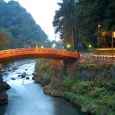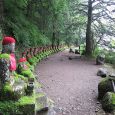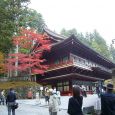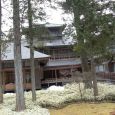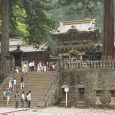Nikko
Advertisement
By train
The fastest and most convenient way to access Nikko is on the private Tobu Nikko Line from Tokyo's Tobu-Asakusa station.Tobu Railway runs all-reserved limited express services, known as tokkyu trains, to the area. These trains, which use Tobu's "SPACIA" railroad equipment, have comfortable, reclining seats, with vending machines and KIOSK available on most trains. One service, called Kegon runs directly from Asakusa to Nikko in the morning, and back to Asakusa in the afternoon.
By Japan Rail
Travel by JR costs more and takes longer, and isn't really worth considering unless you have a Japan Rail Pass, in which case you can take the Tohoku Shinkansen (Yamabiko, Max Yamabiko, Tsubasa or Nasuno) from Tokyo Station or Ueno to Utsunomiya (50 minutes or 44 minutes, respectively), then connect to the JR Nikko line (43 minutes from Utsunomiya to Nikko). From Tokyo Station, the whole trip will take from about 1 hour 40 minutes to around 2 hours, depending mostly on the connection in Utsunomiya.
Advertisement
Takino-o Shrine
This often overlooked mountain shrine is situated slightly up the mountain behind Toshogu and provides a welcome relief from the more crowded areas of Sannai. It takes its name from the picturesque waterfall that greets you at the base of the entrance. You can get there by walking for about 15-20 minutes along an ancient and atmospheric stone path that begins behind the Toshogu Shamusho . This path also features several other notable sites such as the Kyosha-do Hall (Japanese Chess pieces are left here as offerings for hopes of a safe birth), the worship hall Kaisan-do and the gravesite of Shodo-Shonin.
Kanmangafuchi Abyss
A long series of jizo protector statues on the side of a hill, some adorned with hats and bibs, some crumbling with age, with a river, small waterfalls and rapids below. Legend says that the statues change places from time to time, and a visitor will never see them in the same order twice. It can be tricky to find - at Shinkyo, instead of heading up the steps to the temple area, follow the road around to the west and walk roughly half an hour following the river - look for signs along the way. You will be walking through a residential area. If you pass the Turtle Inn, you are heading in the correct direction.
Toshogu
The burial place of dynasty founder Tokugawa Ieyasu and the most extravagant of the lot. Ieyasu was buried here immediately after his death, but the present complex was only built in 1634 on the order of his grandson Iemitsu. The shrine took 2 years to complete with the efforts of 15,000 workers.
Yakushi-do Hall
The Hall of the Medicine Buddha, is known for a dragon painting on the ceiling. A monk is usually on hand to speak and strike a special block whose sharp, piercing sound is said to be identical to the cry of a dragon not quite the roar of English legend but an attention getter all the same.
Yomei-mon Gate
Yomei-mon Gate is an incredibly ornate gate with over 400 carvings squeezed in.
To the right of the main hall is the way to Ieyasu's tomb, entry to which costs an extra ¥520. Look out for another famous carving, this time of a sleeping cat (nemuri-neko). There are 200 stone steps, and steep ones at that and then you finally reach the surprisingly simple gravesite itself.
Rinno-ji Temple
Rinno-ji Temple Known for its three large Buddha figures, the real reason to visit is the beautiful and peaceful Shoyo-en Garden, included in the price. ¥1300.
Shinkyo
This much-photographed red bridge separates the shrines from the town of Nikko. In feudal times, only the shogun was permitted to cross the bridge, and even today it's barred from pedestrian traffic although there's a 4-lane highway rumbling right past. You can get a nice view from the sidewalk, but to set foot on the bridge and look down into the gorge below, you'll have to buy a ¥350 ticket from the booth nearby.
Tamozawa Imperial Villa Memorial Park
Built for the Emperor Taisho in 1899, the former imperial villa also served as a hide-out for Hirohito during World War II. It's next to the Botanical Garden.
Nikko Botanical Garden
Nikko Botanical Garden Has plenty of the local flora and gardens that were said to be favorites of the Emperor Taisho. It's now an adjunct to Tokyo University.
Information not available
Information not available
Advertisement

